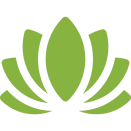The science of Abhyanga
"The body of one who uses oil massage regularly does not become affected much even if subjected to accidental injuries, or strenuous work. By using oil massage daily, a person is endowed with pleasant touch, trimmed body parts and becomes strong, charming and least affected by old age." - Charaka Samhita Vol. 1, V: 88-89.
Abhyanga, the Sanskrit term for oil massage is an Ayurvedic treatment method that comprises of a body massage with warm oil. Often, the oil may be infused with herbs in order to treat specific conditions. The oil used in a massage may vary depending upon one's constitution and the season, but sesame, coconut, sunflower, mustard and almond tend to be used most commonly.
Ayurvedic practitioners recommend the inclusion of Abhyanga as a part of one's daily routine for good health and well-being. The science behind Abhyanga is to encourage absorption of oils used in the massage to various layers of the skin, which aids and improves the functions of the skins, such as release of toxins, or absorption of nutrition.
In Ayurveda, an Abhyanga massage is often likened to the effects of love, and thus the Sanskrit word “sneha” meaning love, is often used to mean oil. It is believed that having an Abhyanga massage can lead to feelings of warmth and stability, akin to love. This method allows the oil to penetrate deep into the body and each layer of tissue and is thus, far more beneficial than usual massages. It is believed, in the practice of Ayurvedic medicine that the human body contains seven layers of tissue, each of which is more vital than the one above. In order to ensure that the oil permeates the deepest layer, practitioners of Ayurvedic medicine believe that it must be five minutes of self-massage would be beneficial.
PROCEDURE FOR ABHYANGA:
A qualified Ayurveda physician selects the oil according to your body type and health needs. A well-trained therapist carries out the procedure, usually for the duration of 45 – 60 minutes in a room which is calm and quite. The room should be devoid of direct sunlight, breeze and cold wind. A light soothing music may be played in the treatment room.
- Abhyanga is done on the treatment table or droni (Specially designed wooden table).
- The patient/guest must clear his/her bowels before the treatment
- Guest should have an empty stomach during the procedure.
- Approximately 100 to 150 ml of oil is used for Abhyanga. The oil is kept warm through-out the procedure.
- To facilitate massage to all the body parts, the massage is done in 7 positions. Abhyanga starts with the sitting position, where in oil is applied to head, ears, feet and later to all the body parts. In supine position, face, chest, abdomen, hands and legs are massaged. In left lateral position, massage is focused on right side of the body. In the prone position, massage is concentrated on the back, spine, buttocks, hands and legs. In right lateral position, massage is done on left side of the body. The massage ends with the supine and sitting positions.
- Synchronized circular movements are carried over the joints, abdomen and chest during Abhyanga; longitudinal strokes or downward movements are carried out over the hands and legs. Pressure is applied by the therapists according to patient’s need. In each position massage is carried out for about 5-10 minutes.
- After the treatment, Sweda (steam therapy) or hot water bath is given as per physician advice.
The most important benefits of Abhyanga, among others, are as follows:
- It helps to retard the process of aging;
- Abhyanga improves the body's stamina and limb strength;
- It helps to flush out toxins and impurities from the body, and improves the functioning of the body;
- It improves circulation of bodily fluids;
- Abhyanga is believed to make skin healthier, and hair stronger;
- It helps in the improvement of vision. It is believed that a regular practice of Abhyanga correct and keep in check any imbalance in the doshas, thereby enhances well-being.
- Promotes deeper sleep.
- Relieves stress and enhances perception of sense organs
- It pacifies vata and pitta dosha.
According to Sushruta, "The deranged vayu [vata] of the body is restored to its normal condition by the help of Udvartana (massage)."— (Sushruta Vol.2, 24:28)
Ashwagandha taila, Bala taila, Mahanarayana Taila, Ksheerabala Taila, Dhanwantaram taila, Dashamoola Taila are some of the oils that are commonly used for abhyanga.
Though Abhyanga has a lot of benefits yet there are a few contraindications.
- Abhyanga shouldn’t be done if the patient is suffering from indigestion.
- Abhyanga should be avoided if there is a rise in body temperature or in case of fever or chills.
- Abhyanga should be avoided in case of Rheumatoid arthritis as it leads to increase in pain.
- It should be avoided during menstrual cycle or during pregnancy.
- Abhyanga shouldn’t be done when there is fracture, swelling or painful masses of the body.
- Abhyanga shouldn’t be done over infected and broken skin.
Abhyanga is one treatment that can be done at home, by one’s self. Daily Abhyanga will keep the body strong and firm. It not only boosts your energy but also keeps one looking young.
With inputs by Dr Ashwini V Konnur, BAMS, YIC, CFN



 Please expect a free call back
Please expect a free call back






Leave a comment